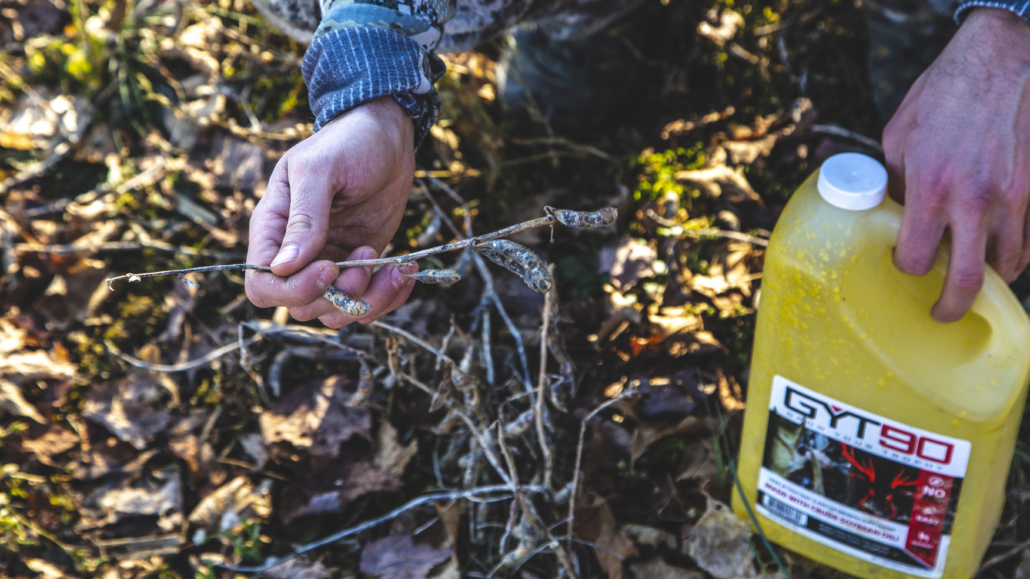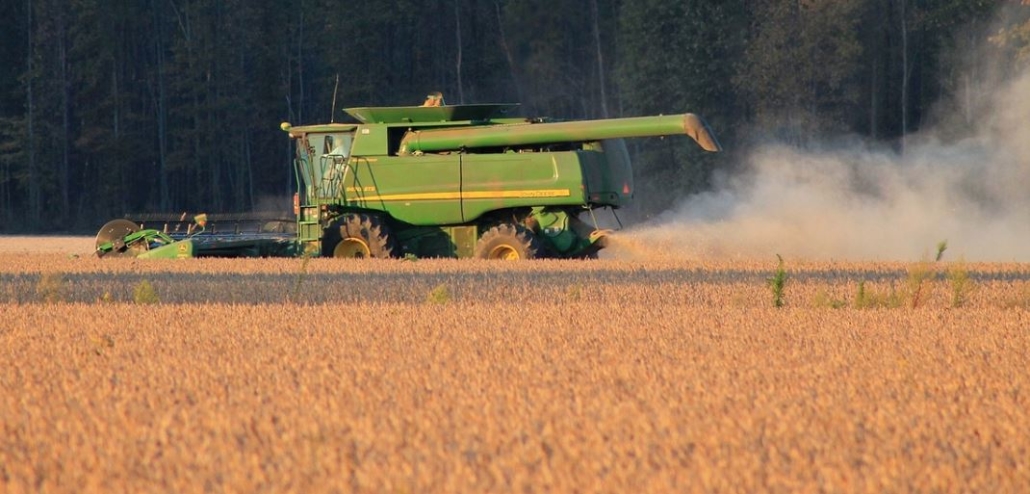In many states, there’s still time for some late season deer hunting opportunities. Whether you can hunt with a firearm or bow, the late season can actually be a great time to fill your tag if you know how to go about it. Sure, there are challenges with hunting late season whitetails, including cold weather, pressured animals, and generally tougher conditions. But if you can find some good late season deer food sources, you might be able to stack the odds back in your favor and use a buck’s stomach against him. So if you’re wondering what deer eat, here are a few great natural and planted/provided food source options for late season deer, and some ways you can capitalize on them.
Late Season Deer Food Sources
First, realize that deer can get along just fine in some areas with their own natural habitat and nothing more. But they still probably won’t be living to the fullest potential. And on the flip side of the coin, there are many areas where the deer herd is too large or the habitat has been altered so much that planted food sources are the deciding factor for survival. In the late season, especially, deer are looking to pack on some weight fast to help them get through the winter. Even more so than does, bucks need a lot of calories fast to spring back from the rigors of the rut. So even the pressured and educated deer that make it to the late season may make exceptions for good late season deer food sources. Here are several great places to start your search for the late deer season.

Natural Food Sources
In high quality deer habitat, native food sources are abundant. Though the bumper crops of soft mast (e.g., apples, persimmons, berries, etc.) and hard mast (e.g., oak acorns, etc.) from fall have all but disappeared, good habitat should have a lot of another important deer food: woody browse. Deer are highly adapted to survive winter by eating the tender twigs and buds of shrubs and trees, and even bark in bad conditions. Browse is a critical winter deer food for a good chunk of the country. If your region consists of mostly forest, there’s a good chance your local deer depend on it too. So how do you find late season deer food sources in thousands of acres of forest?
Try looking for recent clear-cuts, or areas that have been harvested or thinned in the last 5 years. These areas usually have an abundance of regrowth from the summer following the harvest, and in many cases, will be so thick that you can barely move through it. These tender young sprouts are usually full of protein and minerals and are extremely digestible for deer, which makes them highly attractive. If you can find an area like this, you can bet that deer will be spending a good chunk of their time there.
Agricultural Fields
If you live in more of an agricultural area where row crops dominate the landscape, deer will really depend on these crops in the late season. Vast swaths of standing corn and soybeans are very inviting for deer and almost everyone can agree they are some of the best late season deer food sources where available. Whitetails can bed and feed in the corn, or hop over to the next field to munch on some soybeans. Corn and soybeans have a ton of carbohydrates to pack on the fat for the winter, while soybeans also offer a high fat content to bump up the calorie count.

But there’s a catch. Farmers are also trying to harvest their crops before the winter weather sets in and before the deer can completely consume it. Once it is harvested, some waste grain remains in the field, but even this can disappear fast if winter snow starts accumulating. When the fields are totally harvested, deer might travel long distances to wintering areas where they can survive better, which means your time to hunt them may be limited and dependent on the harvest schedule. This brings us to the next topic…
Food Plots
If you have the land and the means, planting several acres of corn or soybeans and leaving them standing throughout the winter as a food plot provides a major draw for deer. If you have the only field left standing in a desert of plowed fields for miles around you, you can bet you will attract and hold deer for as long as the food remains. It’s a dream scenario for most hunters: having one of the best late season deer food sources around. But it doesn’t have to be just corn or beans. Other good late season food plots include grains (e.g., wheat, oats, rye, etc.), turnips, radishes, and winter peas.
- Grains are often planted as a cover crop, so they can be dual-purpose for farming and hunting. They are most nutritious, palatable, and attractive to deer when they are very young and tender, so this obviously has limitations for truly late season hunting, unless you are located further south. However, winter rye for deer has good frost tolerance for late season opportunities in northern areas.
- Turnips and radishes can be attractive to deer earlier in the season, but they really become attractive after a frost. The starches are converted into sugar, which makes them much sweeter tasting. It’s common to hear “crunch, crunch, crunch” all day when hunting over brassica food plots that include turnips or radishes in the mix.
- Austrian winter peas are extremely attractive for deer, but you need a very large food plot or low deer density or else they will just be overgrazed before they can reach full production. Nonetheless, make sure some of your food plots include winter peas for deer if you want great late season attraction.
Supplemental Feeding/Baiting
If none of the prior categories are all that great in your neighborhood, or you simply want to provide a boost to the local deer herd, you could also consider supplemental feeding for whitetails. If you will also be hunting over these areas in the late season, this is called baiting. Many states do not allow baiting or feeding deer in any fashion, so make sure you know the regulations before you pursue this option.

Undoubtedly, the best bait for the late season is a pile of corn with some GYT90 deer attractant poured over the top. Corn packs the nutrition deer are craving, and our deer attractant is full of minerals and crude soybean oil to provide a boost of calories (and some major attraction). You could also use deer food pellets in feeders for this purpose, but corn seems to hold up better. Either way, this is a great way to attract deer to a very specific area for an archery shot, for example.

If you have access to hunting over or near these late season deer food sources, you stand a really good chance of encountering a mature buck during daylight yet this season. It’s not too late!







































![Air gun 101: The differences between .177 & .22 – Which jobs they do best ? [Infographic]](https://airgunmaniac.com/wp-content/uploads/2020/09/g44-150x150.jpg)



